Raspberry Hibiscus Sorbet
A raspberry flavour deeper, purer and richer that what raspberries normally provide? Could that be possible without resorting to industrial grade-chemistry?
The short answer is “Yes” – all thanks to the beautiful, versatile Hibiscus flower!
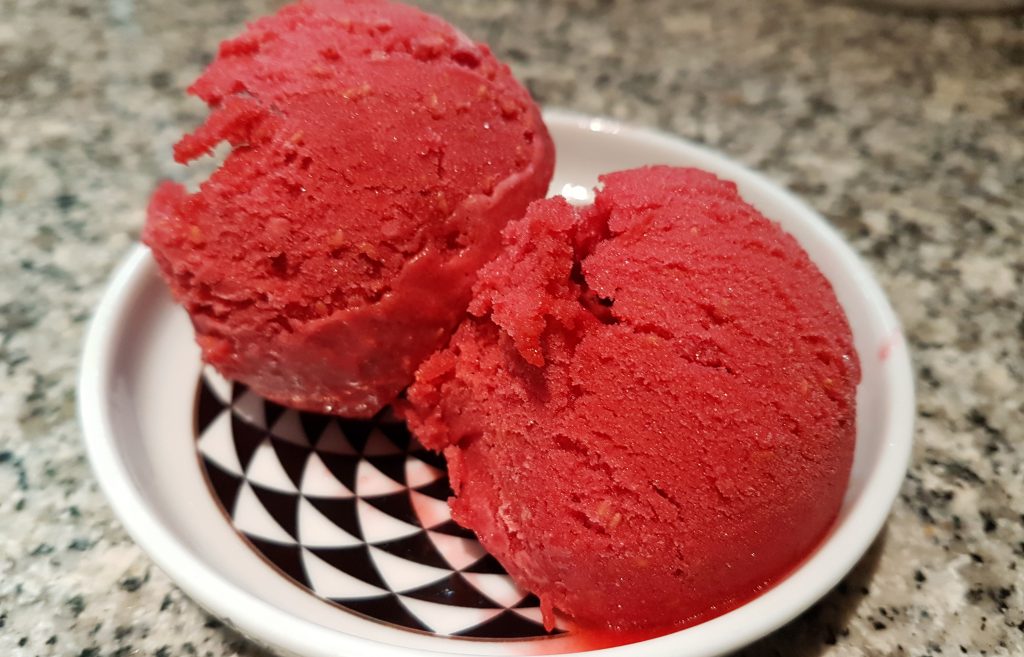
Raspberry Hibiscus sorbet – the deepest and purest raspberry flavour you could imagine (no industrial-grade flavour enhancers involved either!)
Raspberries – both healthy and delicious
Many of us love raspberries and it is easy to see why. Not only do they taste delicious and look good. They, like most berries, also come loaded with antioxidants, vitamins, and minerals like iron. And a whopping 20 % of a raspberry consists of healthy dietary fibres. So, while most people don’t eat ice cream for health reasons, boosting your frozen desserts with raspberries can’t be wrong 😉 .
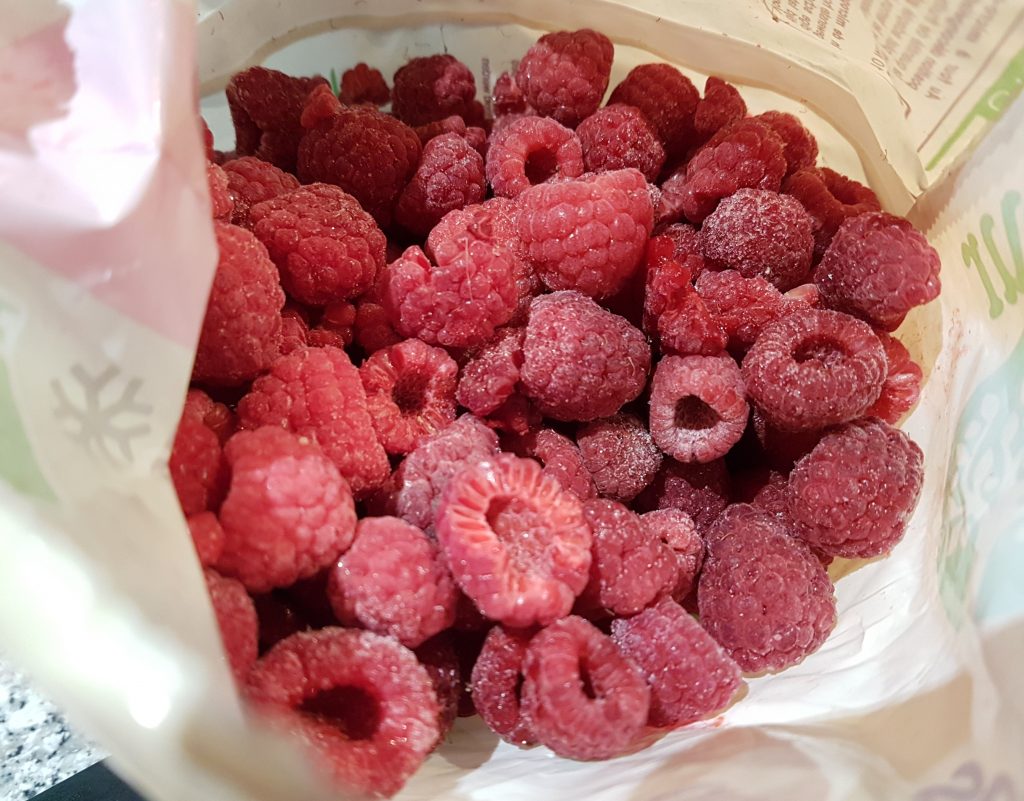
Any raspberries will do – frozen or not. Using frozen berries might , however, shorten the total churning/freezing time: something which always is an advantage in ice cream-making.
Raspberries already figure in a few recipes on this site (check out my favourite raspberry frozen yoghurt, or the blessedly nice Sorbet Cardinale, for a couple of examples) but this time we will examine how to concentrate and elevate the very raspberry flavour itself to new heights … with the help of some Hibiscus!
Hibiscus – the flower

The Hibiscus family is vast, and many different colours and varieties exist.
Hibiscus is the state flower of Hawaii, and the Haitian and Malaysian national flower. But this beautiful tropical and subtropical flower is popular in many other parts of the world, and not only for its considerable ornamental values. The Hibiscus is both versatile and edible – it is used in salads, for hair preparations and skin care, and in some parts of India even as shoe shine (!). It also has purported health benefits, notably in relation to cardiovascular health.
Oh, and in India, you can also use (red) Hibiscus when worshipping the fierce goddesses Kali and Durga (Ganesha also likes the flower).

The Hindu Goddess Kali – fond of the Hibiscus flower
Hibiscus – the brew
In large parts of the world, however, Hibiscus is probably best known either as a refreshing cold summer drink or a nice warm herbal tea (depending on whether served hot or cold). They say that “we find many names for those we love”, so the usually red-coloured Hibiscus drink must clearly be much loved: in Iran, the tangy and tart drink is known as “Sour tea” (Chai Torsh). In Australia, they call it Rosella (in the West Indies and Thailand ‘Roselle‘), and in Egypt and Sudan Karkadé. Latin Americans talk about “Agua (or rosa) de Jamaica“. And so on and so on.
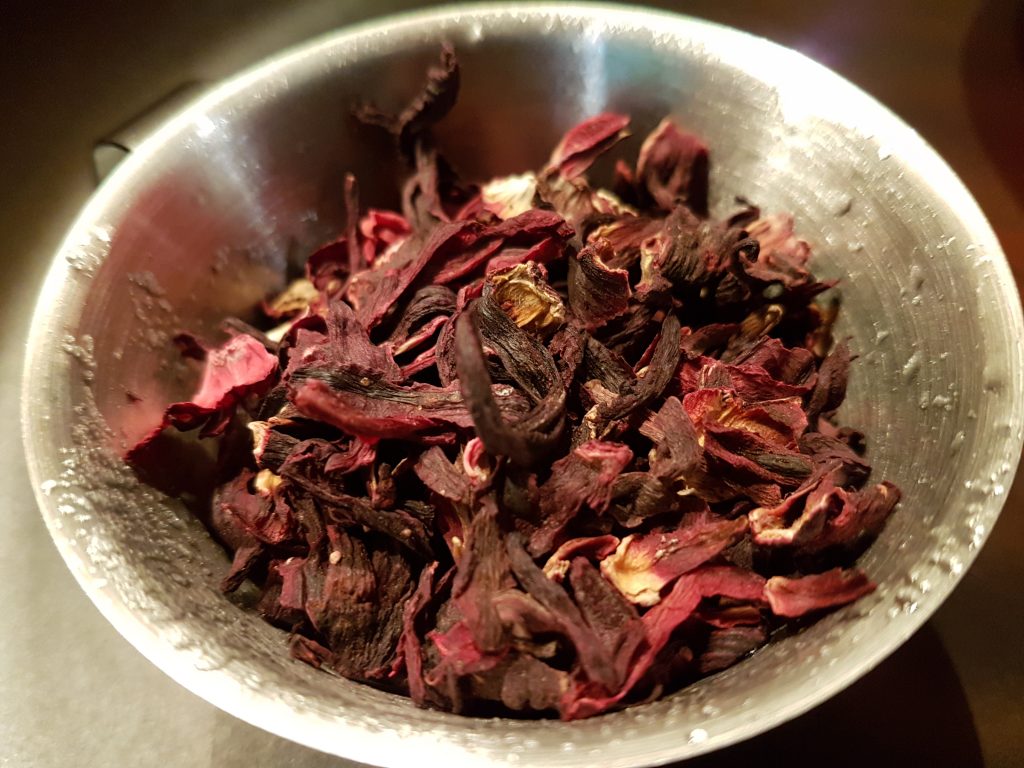
Dried Hibiscus flowers. More potent that the fresh flowers, the dried ones work perfectly well for brewing purposes.
Given its tartness (some would say bitterness), the brews are often sweetened with sugar or honey, and can also be blended with fruit or citrus juices, spices, herbs and other complementary flavours like ginger and mint.
So – in summary: Hibiscus would seem to be an ideal candidate for brewing in a simple sugar syrup – the kind we’ll use to make sorbet!
The easy steps to your Hibiscus-infused sorbet base
Most of the time, I tend to skip the boiling-part when making the simple sugar syrup which is the traditional base for sorbets. This time, however, the boiling serves the additional purpose of infusing the base with the Hibiscus flowers: just like when preparing the tea, the Hibiscus flowers – dried or fresh – should ideally steep for about 15 minutes in water that has been brought to the boil. So mix your water with sugar, bring to the boil and add the Hibiscus flowers. Then take off from the heat and leave to properly infuse.
[Would you like your sorbet to hold together a little bit better and not melt away so quickly once served? Consider adding a little Agar agar once you have sieved off the Hibiscus flowers from the syrup, then bring the syrup back to the boil for a couple of minutes. Let cool down a little, then mix it all with the fruit purée below]
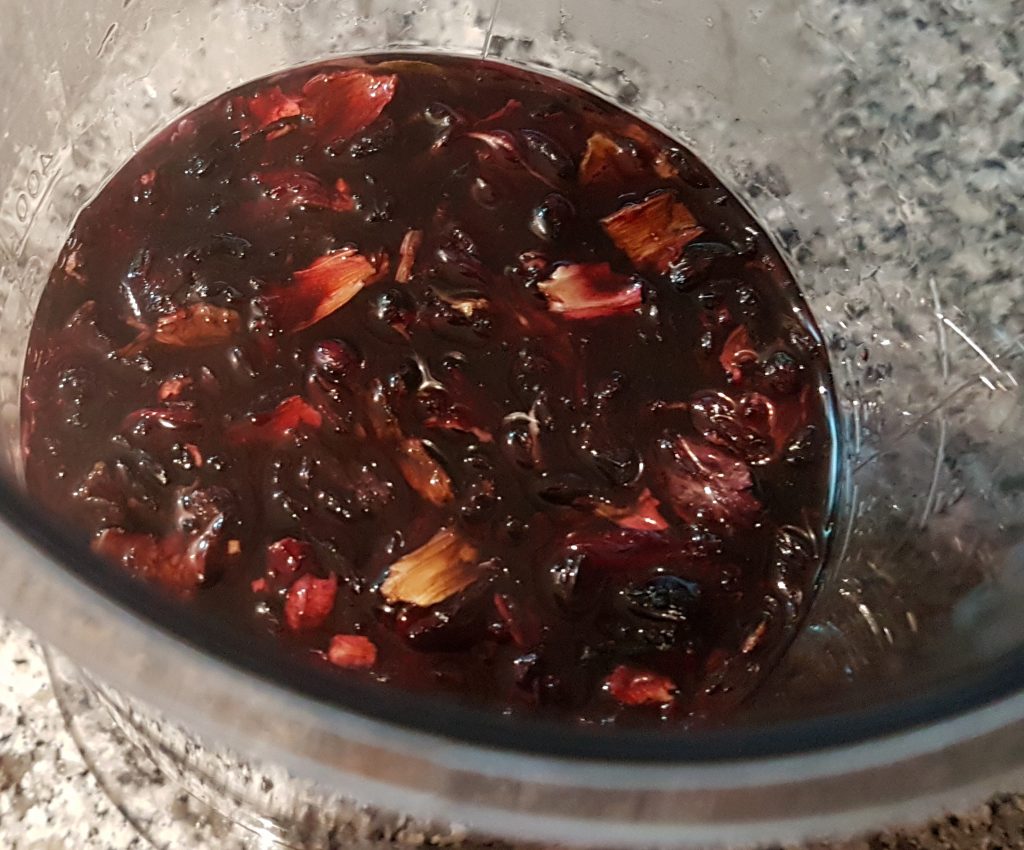
Start out just like you would do when preparing a typical simple sugar syrup for sorbets: Mix water with sugar and bring it all to a boil until all the sugar has dispersed completely. Then add the Hibiscus flowers, take off from the heat and leave to infuse for about 15 minutes.
While your Hibiscus-boosted sugar syrup is infusing (and cooling down …), you can prepare the raspberries. This is also super-easy: just turn them into a purée and add a little lemon juice to the blend.
Now, the Hibiscus sugar syrup should be sufficiently cooled down: sieve off the flowers and add the syrup to your raspberry purée.
Blend well: Your sorbet base is ready!
Cautious ones may want to check that the sugar-ratio is OK for a sorbet. Otherwise, just take my word for it and begin the churning 😉 .
Raspberry Hibiscus sorbet – More raspberry than raspberries themselves
When I decided to test this flavour combination, I had no idea of what to expect. And yet, the outcome took me with surprise: the Hibiscus brew teamed up with the raspberry flavour in a discreet but significant way. While the Hibiscus flavour did not leave any particular flavour-trail of its own, both myself and my faithful testers were happily surprised and delighted to find out that the brew instead acted as a major enhancer of the raspberry flavour! Yes, somehow the Hibiscus made the sorbet taste richer and more purely of raspberry than the berries ordinarily would manage on their own. I know, it almost felt as weird as it perhaps sounds, but I assure you that there was nothing unnatural about this fresh, pure flavour. It was blissful, rich and natural raspberry all the way – and possibly the best raspberry sorbet I have ever savoured.
So – brighten up both the raspberry flavour and the lives of both yourself and those around you! Mix yourself a batch of turbo-charged Hibiscus Raspberry sorbet and relish the tasty wonders Mother Nature bestows upon us!
PS. Sorbets typically lose out in flavour faster than ice creams if stored in the freezer for any longer time, but I can report that the “structural” freezer qualities of this sorbet are very good: the sorbet maintained its good consistency and stayed nicely scoopable even after a few days in the freezer.
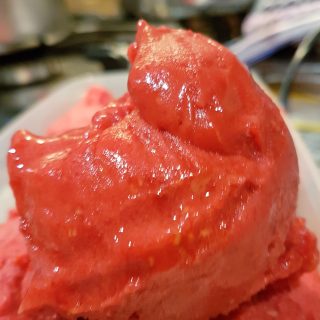
Raspberry Hibiscus sorbet
Ingredients
- 450 gr raspberry purée
- 350 ml (about 1.5 cups) sugar syrup - made with equal parts sugar/water = 200 ml of each
- about 90 ml (about 2/5 cup) dried hibiscus (if using fresh, increase 1.5-2 times)
- Juice of 1/2 lemon
- Optional: about 2 gram Agar agar
Instructions
- Mix sugar and water in a saucepan and bring to a boil, ensuring that all sugar is fully dispersed in the water.
- Add the dried Hibiscus flowers and take off from the heat. Let the flowers infuse for about 15 minutes.
- Optional, if using Agar agar: add the agar to the syrup once the flowers have infused and been sieved off. Bring the syrup to the boil again for a couple of minutes, let cool down a little and mix with the purée as per below as quickly as possible.
- Turn the raspberries into fruit purée (using a handheld mixer or similar) and add the lemon juice.
- When the infusion is finished, sieve off the Hibiscus flowers and add the Hibiscus sugar syrup to the raspberry purée. Mix well - your base is ready.
- Churn in your ice cream machine until ready, or still-freeze using your freezer if you have to.
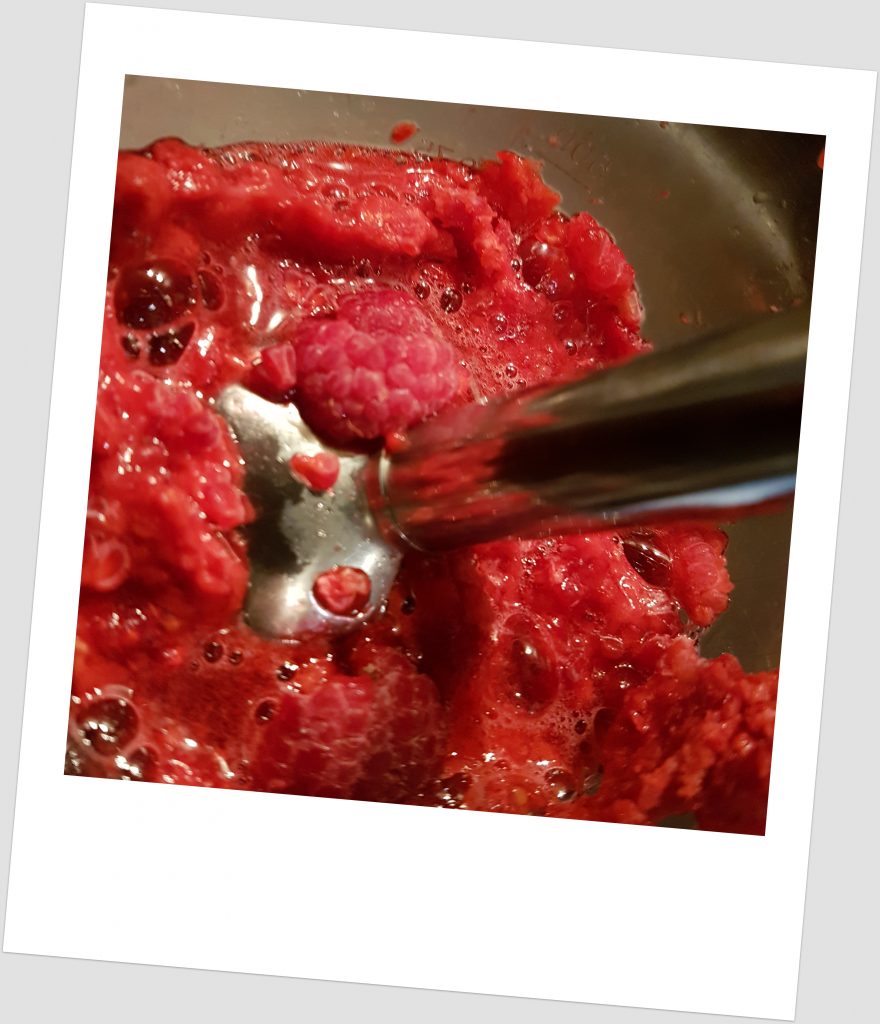
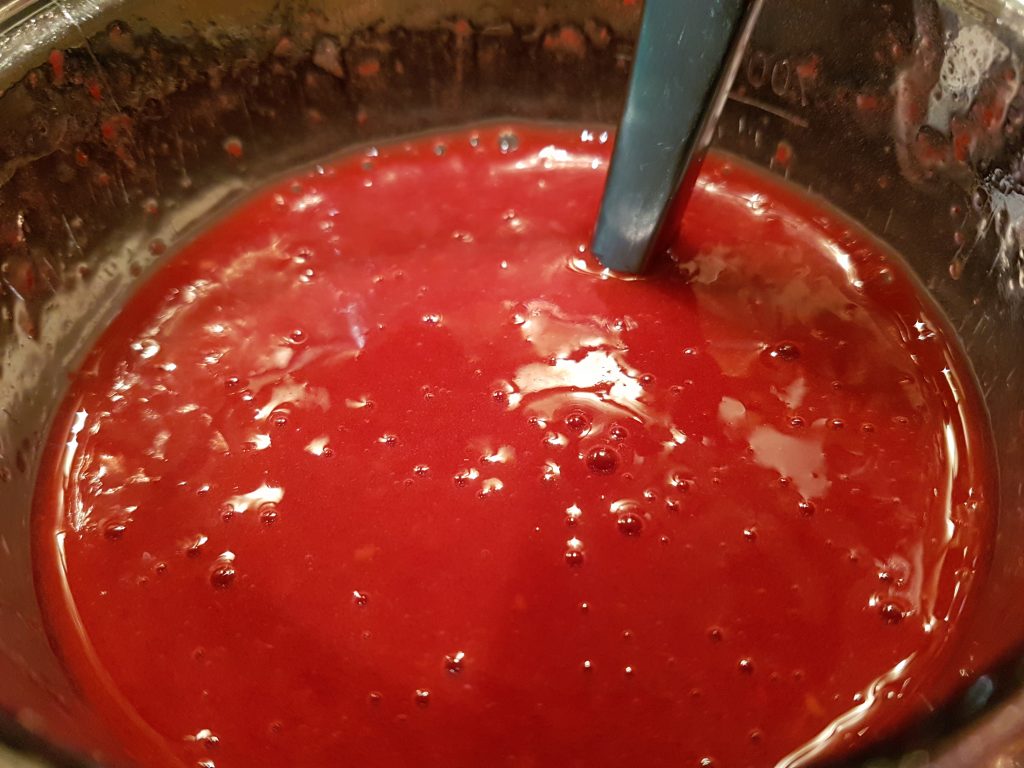
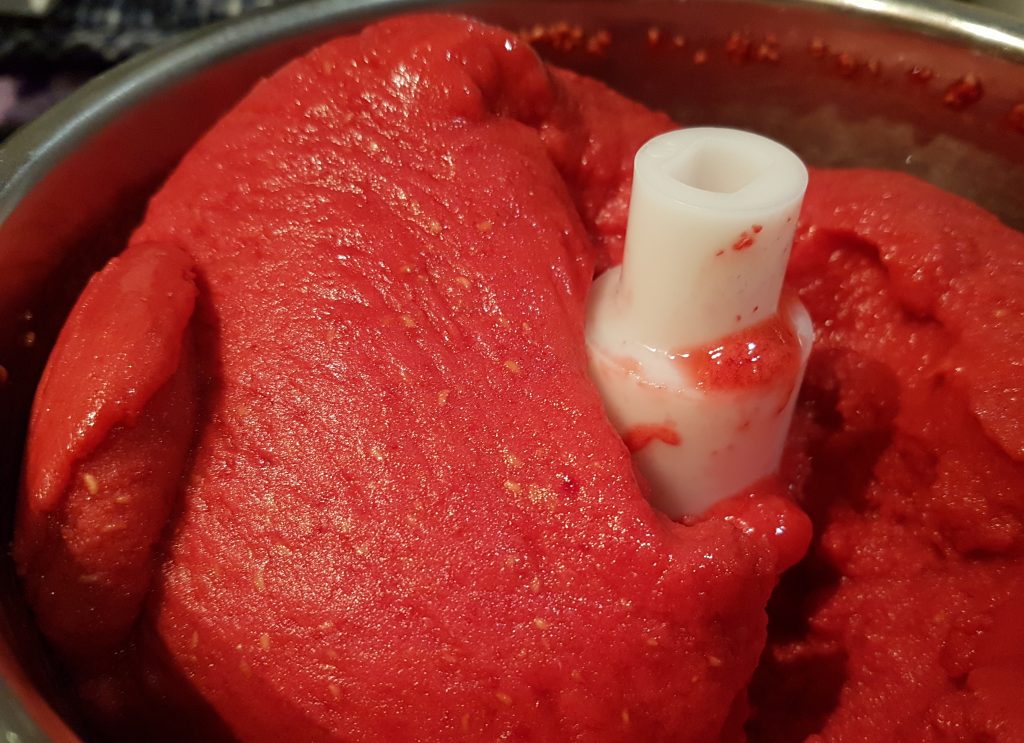
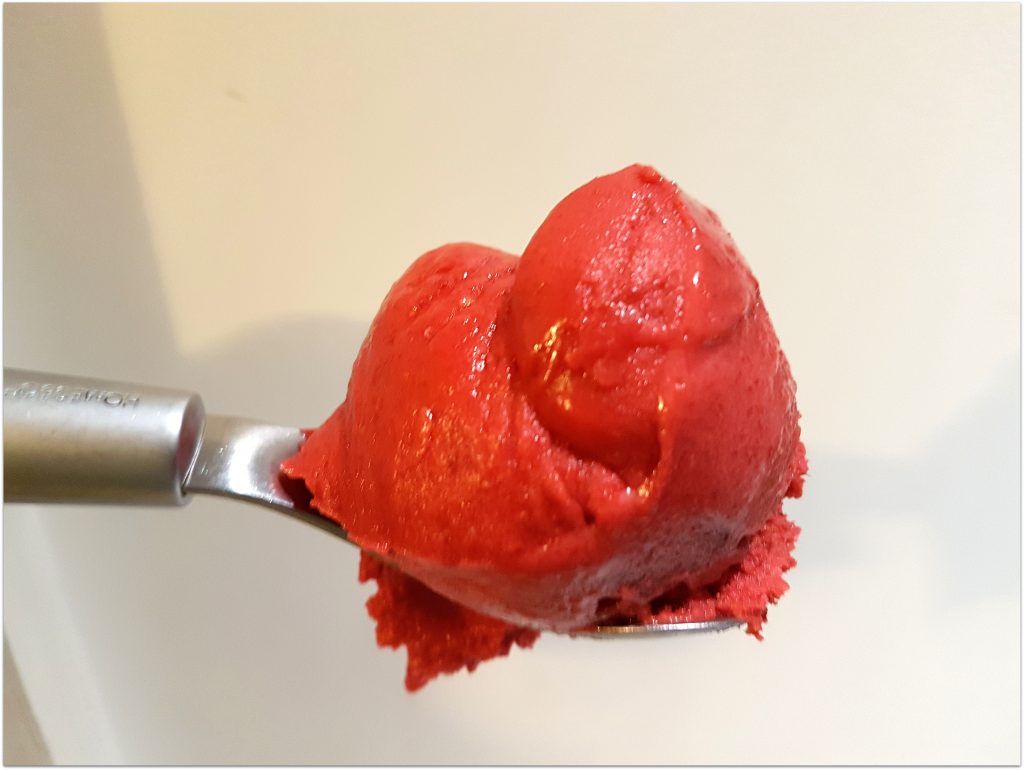
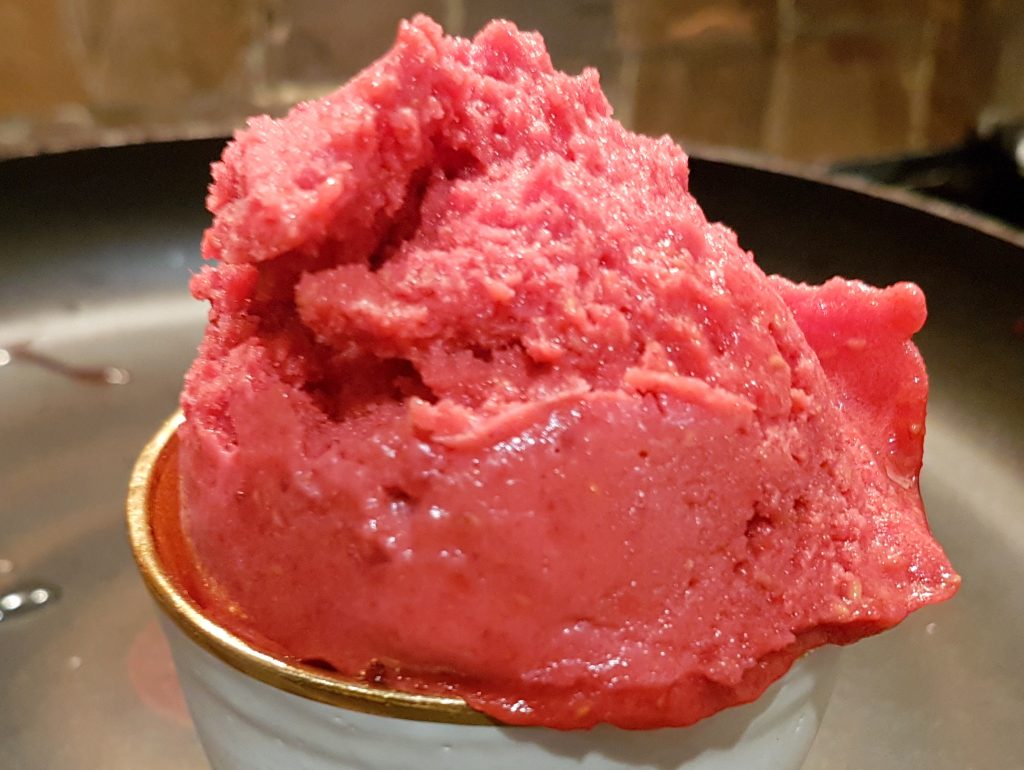
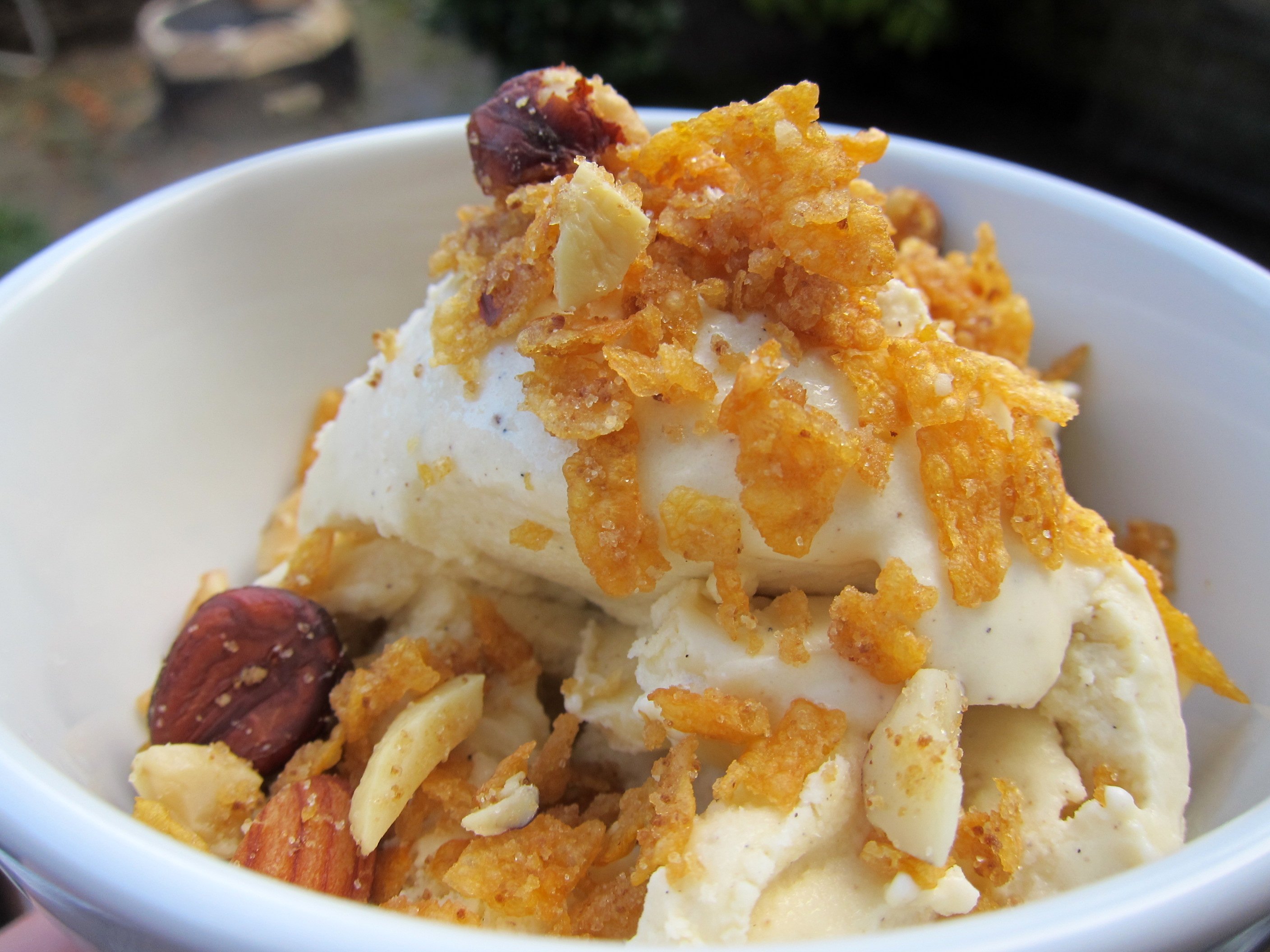
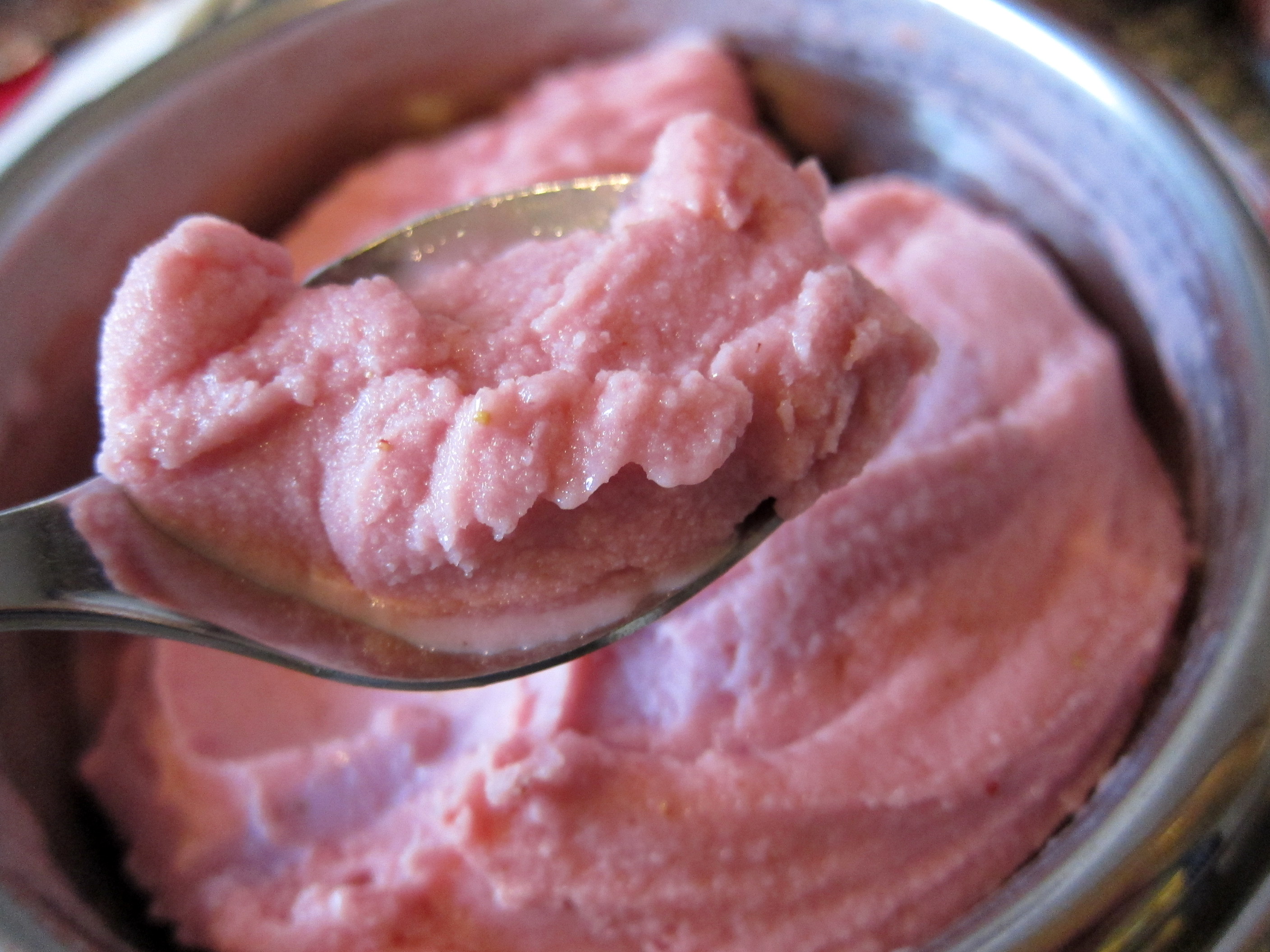



nice job, would you please share with us more recipe made with Gellan Gum please?
Gellan gum is a very effective stabiliser for those who don’t mind adding such to your ice cream.
You can read a bit more about Gellan in this recipe for Fior de Latte ice cream.
Are your raspberries seedless? When I make raspberry sorbet i either get a dense “peppering” of seeds that are visible in photos and a bit arduous to eat – or I have to sive them off which you didn’t seem to do here?
Hi Nicolai,
I would not say that my raspberries are seedless, but you make a good point since preferences can differ here: some people prefer their sorbets to be as smooth as possible, whereas others (like myself …) quite enjoy the inclusion of – for example – raspberry seeds. But that said, there might be strawberry variations with unpleasant amounts of seed too.
One thing is clear: those who find raspberry seeds disturbing – or simply prefer their sorbets to be as smooth as possible – could well sieve them off!
With raspberries in season I’ve finally made this and it turned out lovely! Previously I’ve had problems with raspberry sorbets turning out too icy because I’ve been reluctant to add enough sugar I realize now. The hibiscus bitters probably helped balance the sweetness in this recipe.
I have a sugar weight since this spring but I’ve been unable to use it because I also need a taller and narrower vessel than we have to put the base in to measure it.
As for my previous comment about raspberry seeds: I first purre the raspberries, and then I sentrifuge them – the juice sticks quite hard to the seeds and other solids. Using a sieve will be somewhat time consuming.
BTW, when I boil 2dl water and 2dl sugar I get about 3dl simple syrup, so I had to add some plain simple syrup to the hibiscus infused syrup to make up 3.5dl
Thanks for your blog!
Nicolai, great to hear :-)!
Thanks for sharing this recipe! I’m planning to make it soon but I wanted to ask you if I want to add aquafaba meringue to this sorbet, what are the modifications?
Hi Reem,
The modification you need to make is simply to ensure that the combination of the base and the aquafaba you’ll be adding ends up with (approximately) the same amount of total sugar which you would have used in the ‘ordinary’ sorbet. Both the simple sugar syrup of the sorbet recipe and the aquafaba contain sugar, so if you simply make the base without a reduction of sugar, you risk ending up with something which will be far too sweet. You can take a look at this mango aquafaba sorbet recipe for inspiration. Best of luck!